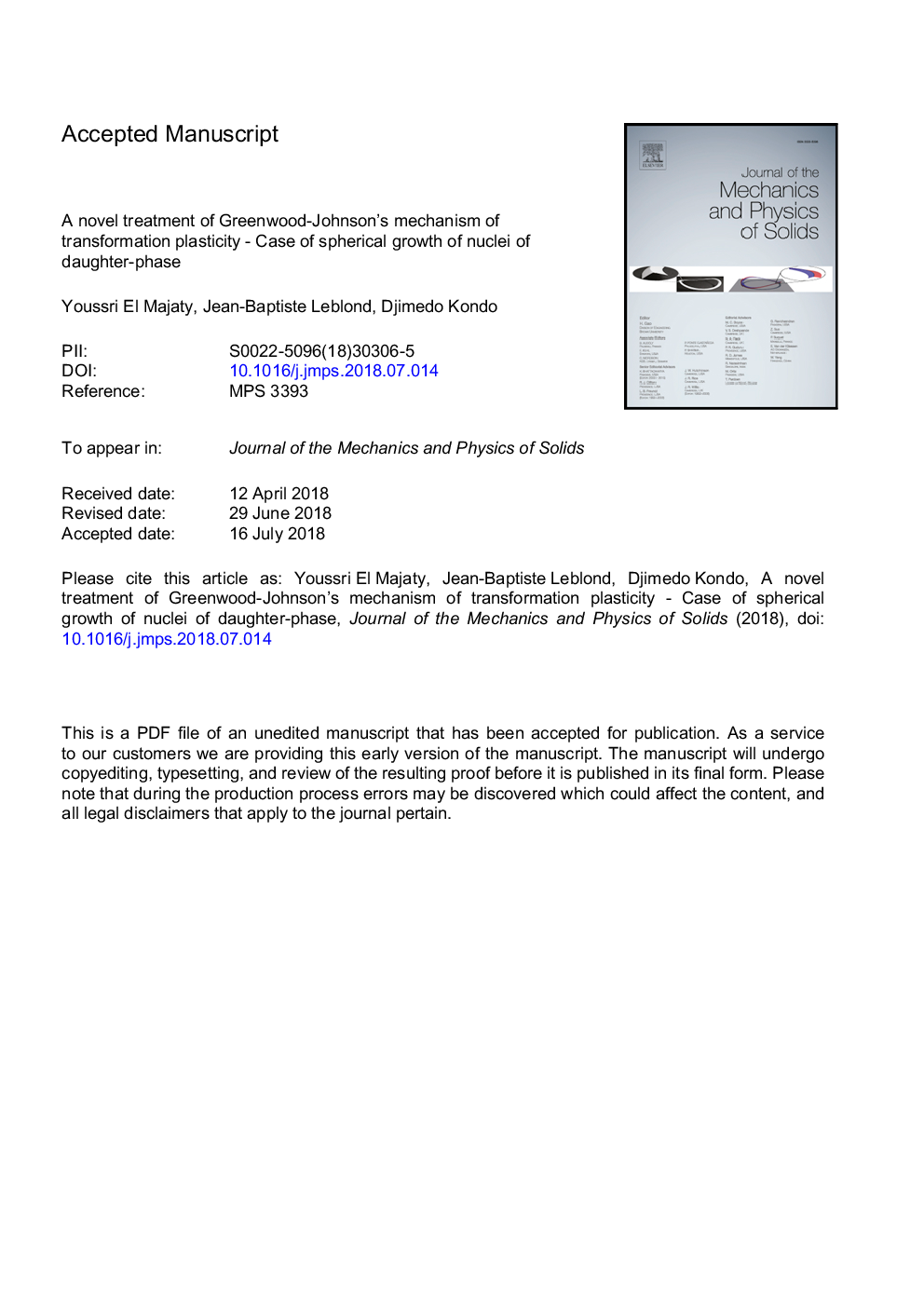| Article ID | Journal | Published Year | Pages | File Type |
|---|---|---|---|---|
| 7177333 | Journal of the Mechanics and Physics of Solids | 2018 | 38 Pages |
Abstract
This paper proposes an innovative treatment of Greenwood and Johnson (1965)'s mechanism of transformation plasticity of metals and alloys, based on the disregard of elasticity and the powerful kinematic method of limit-analysis. In the new approach the spherical representative unit cell considered in the homogenization process includes only the mother-phase surrounding a growing nucleus of daughter-phase, but the external loading arising from the macroscopic stress applied is supplemented with an internal one arising from the volumetric transformation strain of the enclosed nucleus. The treatment brings considerable improvement to the classical one of Leblond et al. (1989), not only by eliminating the need for ad hoc hypotheses of limited validity, but more importantly by extending its results to more general situations involving large external stresses, comparable in magnitude to the yield stress of the weaker, mother-phase. The theoretical results are compared to other theories, experiments, and finite element micromechanical simulations considering a representative volume of shape identical to that in the theory. In addition, the methodology presented paves the way to incorporation, in a future work, of the effect of anisotropies of morphologic type (tied for instance to growth of nuclei of daughter-phase elongated in a certain privileged direction) upon transformation plasticity; this will be done through consideration of representative unit cells of more complex shape.
Related Topics
Physical Sciences and Engineering
Engineering
Mechanical Engineering
Authors
Youssri El Majaty, Jean-Baptiste Leblond, Djimedo Kondo,
